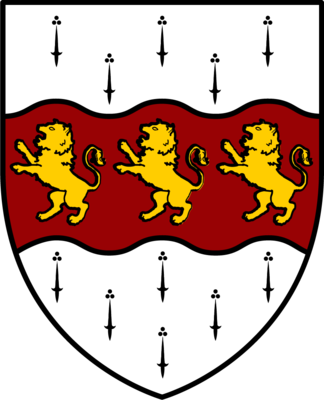Mather House History
Mather House opened in 1970. Mather House was named for Increase Mather (A.B. 1656), seventh President of Harvard (1685-1692), negotiator with James II of the Massachusetts Charter, and father of Cotton Mather (A.B. 1678). After his tenure as President, Increase Mather and his son were instrumental in founding the college which has since become Yale. It was Cotton Mather who suggested the name Yale.
Mather House was designed by Shepley Bulfinch Richardson and Abbot, which has designed all of Harvard's river houses. Established in 1874 by the American architect, Henry Hobson Richardson (designer of Sever), Shepley Bulfinch Richardson and Abbott is one of the oldest continuously-practicing architectural firms in the nation and the oldest in Boston. They have designed numerous landmarks in Boston, including South Station, the Arther Fiedler footbridge, and the Boston Public Library.
Mather is composed of two modern buildings: the Low-rise surrounds a courtyard, from which one gains entry to the Dining Hall, House offices, classrooms, the Junior Common Room, Senior Common Room, other common areas, and student and tutor suites; the Tower has student and tutor suites which command a view of the Charles River and downtown Boston.
Increase Mather & Mather House
In the summer of 2016, a group of Mather students, led by former Mather Faculty Dean Christie McDonald and Karl Aspelund ’17, came together to conduct research into the life and legacy of Increase Mather, Harvard’s seventh president and the namesake of Mather House. The effort was in response to a growing discussion about confronting the historical legacies of the names that adorn the buildings on Harvard’s campus. This discussion, in turn, was sparked by the increased attention in the national media and on college campuses nationwide to the controversial namesakes of landmarks around the United States, particularly those named after Confederate leaders, white supremacists and defenders of slavery like John C. Calhoun, and others with racist views like Woodrow Wilson. In discussions at Harvard, Increase Mather’s name was often mentioned almost in passing as a controversial one, given that he was a long-time owner of a slave called Spaniard and that his name is associated with a defining aspect of the undergraduate experience at Harvard: one of the 12 residential Houses. It was very clear to the research group that most Harvard students, even Mather residents, knew precious little about Increase, let alone why President Nathan Pusey and the Harvard Corporation decided to name a House after him in the 1960s. When asked about the name that defines their undergraduate lives in many ways, Mather residents could say that Increase owned a slave and that he had some affiliation with the Salem Witch Trials. Given the national conversation, it seemed an opportune time to explore the life of Mather House’s namesake and his historical legacy.
After a summer of archival research, the group came together at the beginning of the 2016-2017 academic year to discuss preliminary strategies of how to present to the House the knowledge we had accrued. As is common in the research process, the summer also sparked a second series of research questions, particularly regarding the decision to name the House after Increase in 1966. The group ended up pursuing two projects: an exhibit in the Sandra Naddaff and Leigh Hafrey Three Columns Gallery and the attached booklet. The exhibit required primary sources, and this exhibition would not have been possible without the energetic support of the staff at the Harvard University Archives. With their help, we could catalogue images, transcripts, and letters—including one with Increase’s own signature—to exhibit, as well as memos and other writings from the Pusey administration about the naming decision. We are so grateful for their help. With the helpful, curatorial eyes of Curator Matt Terry and Assistant Julia Grotto ‘17, the exhibit displayed the main themes of our research— Increase’s political life and religious life, his presidency, his slaveholding and associations with the Salem Witch Trials-- from mid-February 2017 through the end of the academic year. Along with many curious Mather residents and visitors, former President Drew Faust—a historian of the Civil War and the American South—also visited the exhibit.
For more information on Naming and Denaming, please check out the Report of the Committee to Articulate Principles on Renaming.
| increasemather_e-book_web.pdf | 1.13 MB |

